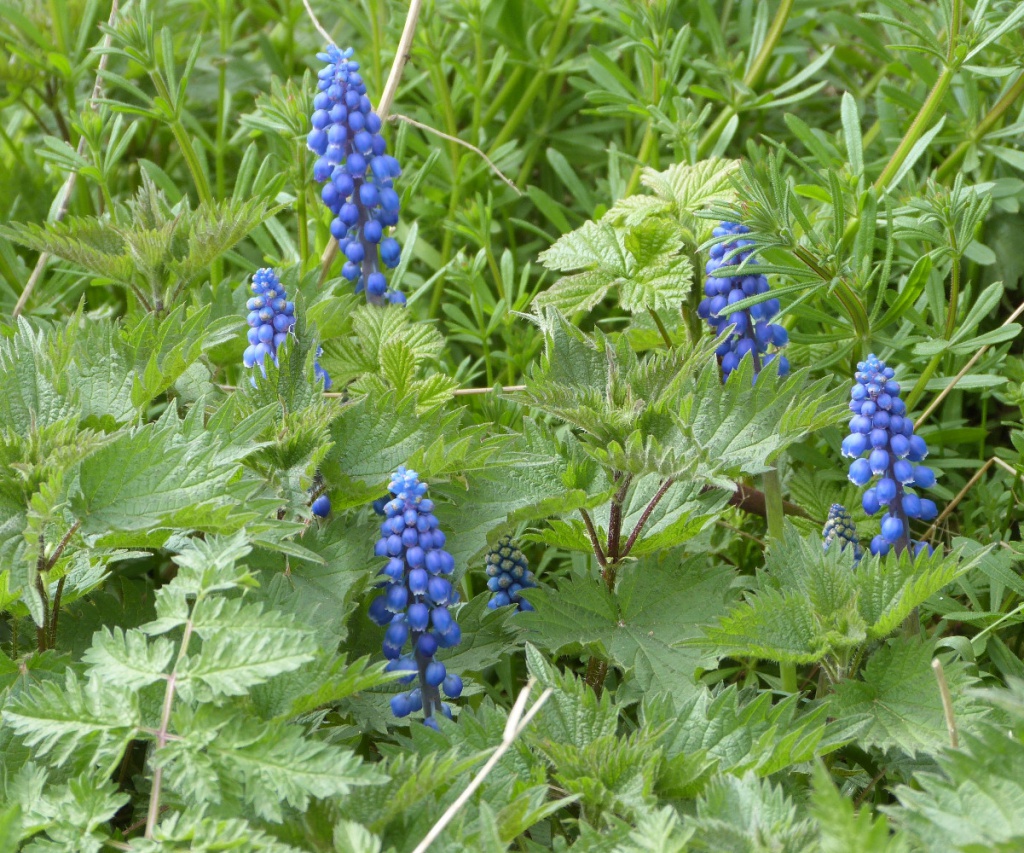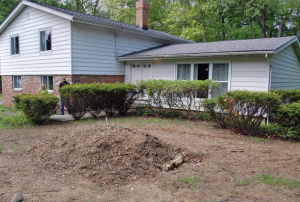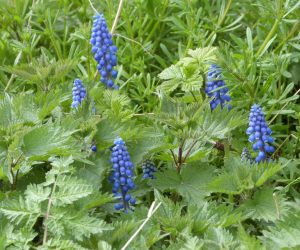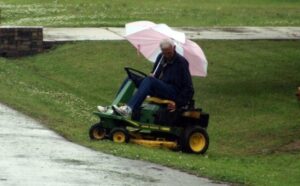
In the soft thaw of an Ontario spring, the grape hyacinth emerges like a promise fulfilled—petite spikes of bluish-purple clustered like berries, dotting lawns and garden beds with their unmistakable charm.
Known scientifically as Muscari, this flowering bulb isn’t a true hyacinth but shares enough visual and aromatic similarities to confuse the casual observer. Its sweet, musky scent is a welcome change after winter’s long grip.
But beauty can be deceiving. While some Ontario gardeners revere grape hyacinths for their early blooms and resilience, others see them as a nuisance—creeping, multiplying, and challenging to remove.
So what’s the truth? Is the grape hyacinth a garden gem or an invasive weed in disguise? Let’s dig in.
What Are Grape Hyacinths?
Grape hyacinths are small, bulbous perennials that originate from southeastern Europe and parts of the Mediterranean. They belong to the Asparagaceae family, and the most common species in Ontario gardens is Muscari armeniacum. These plants grow to about 6–8 inches tall and are known for their tight clusters of deep blue or violet flowers that resemble miniature grapes. The blooms appear in early to mid-spring, often alongside tulips and daffodils.
They’re cold-hardy, deer-resistant, drought-tolerant, and famously low-maintenance—qualities that make them popular in rock gardens, borders, and naturalized lawns.
Why Do People Love Grape Hyacinths?
1. A Fragrant Spring Favorite
For many Ontario gardeners, the allure of grape hyacinths lies in their fragrance and early bloom. Their scent is sweet and faintly spicy, often compared to a blend of musk and grape candy. In a province where spring can take its time arriving, these early risers bring color and scent to still-dormant landscapes.
2. Pollinator Friendly
Bees and other early pollinators flock to grape hyacinths. In April and May, food sources are scarce for emerging bees, and the nectar-rich flowers help sustain them during this crucial time. Native pollinator enthusiasts often encourage grape hyacinth planting for this very reason.
3. Easy to Grow and Naturalize
Grape hyacinths are often marketed as “plant and forget” bulbs. Once established, they return year after year and even spread—sometimes aggressively. For those aiming to naturalize an area or create a “cottage garden” look, this spreading habit is a dream come true.
The Downside: Are They Invasive?
Here’s where the love affair gets complicated. While not listed as a regulated invasive species in Ontario (as of 2025), grape hyacinths are aggressively naturalizing, especially in suburban and semi-rural areas. Many gardeners have shared stories of grape hyacinths escaping flower beds and taking over lawns or garden paths.
1. Difficult to Control
Grape hyacinths spread through two methods: seed and underground bulbs called offsets. Once they gain a foothold, digging them up can be frustrating. Each bulb produces several smaller bulbs each year, and missing even a few means they’ll likely return the next season. What begins as a tidy patch of color can morph into a sprawling, tangled colony.
2. Not Native to Ontario
Although not as ecologically disruptive as species like garlic mustard or dog-strangling vine, grape hyacinths aren’t native to Ontario. This raises concerns among native plant gardeners, who argue that even benign-seeming exotics can displace native flora over time.
3. May Crowd Out Other Spring Bulbs
In mixed bulb beds, grape hyacinths have been known to outcompete more delicate species like scilla, crocus, or snowdrops. Their dense growth and rapid multiplication can lead to unbalanced beds that favor only the most aggressive growers.
Gardeners’ Debate: Weed or Wonder?
Much of the debate boils down to context and personal gardening philosophy.
If you’re a formal gardener:
You might find grape hyacinths frustrating, especially if you prefer clean lines, separated species, and minimal upkeep. Once they spread beyond their original border, grape hyacinths can become a time-consuming chore to manage.
If you’re a wild or cottage gardener:
You’ll likely embrace their spread. Their naturalizing behavior can help cover bare soil, suppress weeds, and provide a romantic, untamed look with very little effort.
If you’re a native plant advocate:
You may avoid them altogether, choosing to plant Ontario-native ephemerals like trout lily, bloodroot, or wild ginger instead. While grape hyacinths don’t cause significant harm to Ontario ecosystems (yet), their non-native status makes them a poor fit for strictly native gardens.
Managing Grape Hyacinths Responsibly
If you already have grape hyacinths—or are thinking of planting them—it’s worth considering how to manage their spread:
-
Plant in Containers or Raised Beds: This is the easiest way to enjoy their beauty while keeping their growth in check.
-
Deadhead After Bloom: Removing the seed heads helps prevent new plants from forming.
-
Dig Deep, Not Just Surface: When removing unwanted bulbs, dig deeply and carefully remove as many bulb offsets as possible.
-
Avoid Composting Bulbs: Unless your compost reaches sterilization temperatures, tossed bulbs can survive and spread when used later.
Are There Native Alternatives?
If you’re looking for the same visual and seasonal appeal but want to stay true to Ontario flora, consider:
-
Virginia Bluebells (Mertensia virginica): A stunning native with nodding blue flowers that bloom around the same time.
-
Wild Hyacinth (Camassia scilloides): Native to parts of Ontario and similar in appearance, but taller and gentler in spread.
-
Blue-Eyed Grass (Sisyrinchium spp.): A small perennial that offers similar blue hues in a more controlled growth habit.
These native species support local ecosystems and offer a more sustainable choice for nature-friendly gardens.
Final Verdict
So, is the grape hyacinth in Ontario an invasive weed or a scented beauty?
The answer lies in your intentions as a gardener. If you’re looking for an easy, fragrant, early bloomer and you don’t mind a little (or a lot) of spread, grape hyacinths are a charming, nostalgic addition to any spring garden. But if you’re concerned about ecological balance, controlling your garden layout, or preserving native plant integrity, you might want to steer clear or opt for responsible containment.
Grape hyacinths aren’t villains—but like many things in gardening, they need to be understood to be appreciated.
Have you dealt with grape hyacinths in your Ontario garden? Did you love them or dig them up by the bucket? Let us know in the comments!






